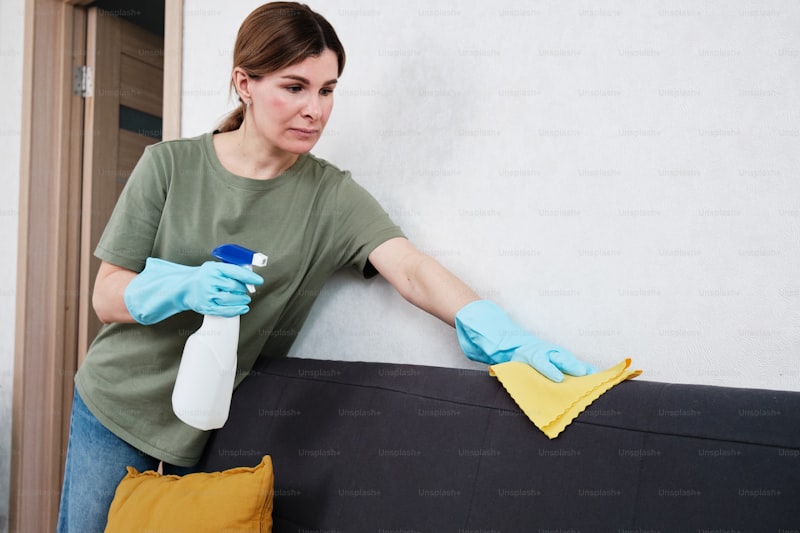Identifying Stains and Their Treatments: A Comprehensive Guide to Restoration
Stains are an inevitable part of our daily lives, affecting our clothes, furniture, and carpets. While some stains can be easily removed, others may require in-depth knowledge of their origins and appropriate treatments. This article aims to provide an extensive overview of identifying various stains and their respective treatments, ensuring you can handle the most stubborn marks with confidence.
Understanding Different Types of Stains
Stains can be broadly categorized into two main types: organic and inorganic. Organic stains originate from natural substances, while inorganic stains are usually caused by chemicals or synthetic materials. Understanding the source of a stain is crucial in determining the proper treatment method.
| Type of Stain | Source | Common Examples | Treatment Method |
| Organic | Natural substances | Food, beverages, bodily fluids | Water, soap, specialized cleaners |
| Inorganic | Chemicals/synthetics | Ink, paint, bleach | Solvents, specific chemical removers |
Common Stains and How to Identify Them
Identification is the first step toward effective treatment. Below are some common stains and key indicators that can help determine their nature.
1. Food Stains
Food stains come in various forms and can often be identified by their color and texture. For instance, tomato sauce typically leaves a bright red mark, while chocolate may leave a dark brown smear. The treatment usually involves:
- Blotting the stain gently with a cloth.
- Applying cold water to prevent the stain from setting.
- Using a mixture of liquid soap and vinegar for more stubborn stains.
2. Beverage Stains
Beverages like coffee and red wine are notorious for leaving hard-to-remove marks. Coffee stains might appear brownish and usually have a slight aroma, while red wine stains are distinguishable by their deep crimson color. Consider these tips for treatment:
- Blot the area with a clean cloth to absorb excess liquid.
- Sprinkle salt directly onto the stain to absorb moisture.
- Wash with a mixture of hydrogen peroxide and dish soap.
3. Ink Stains
Ink stains are often challenging due to their pigment concentration. They may vary in color from blue or black to red, depending on the type of ink. Here's how to tackle ink stains:
- Place a paper towel under the stained fabric.
- Apply rubbing alcohol to a cotton ball and blot the stain gently.
- Rinse the area with cool water after treatment.
4. Grease Stains
Commonly found in kitchens, grease stains have a slick texture and can be identified by their shiny appearance. To remove these types of stains:
- Sprinkle baking soda over the stain to absorb grease.
- Let it sit for about 15 minutes, then brush it off.
- Wash with warm water and dish soap.
Specialized Treatments for Stains
While the above methods are effective for common stains, some require specialized treatments due to their nature or longevity.
1. Blood Stains
Blood stains can be particularly stubborn. They usually appear brown to dark red and can set quickly. To treat blood stains, consider the following:
- Use cold water to rinse the stain as hot water may set it.
- Apply a paste of baking soda and water, letting it dry before brushing off.
- For deeper stains, enzyme-based detergents can work wonders.
2. Wine Stains
Red wine stains can cause panic during gatherings. The key is to act fast:
- Blot the stain gently without rubbing.
- Sprinkle salt or baking soda to absorb the wine.
- Rinse with cold water before applying a stain remover.
3. Yellowing Stains from Sweat
Yellowing caused by sweat can be especially visible on white clothing. Here's how to address such stains:
- Mix equal parts vinegar and water, applying it to the stain.
- Let it sit for 30 minutes before washing it normally.
- Use a mixture of hydrogen peroxide and dish soap as a pre-treatment.

Preventative Measures
Taking preventative measures can significantly reduce the likelihood of stains setting in. Here are a few proactive tips:
- Keep emergency stain-removal kits handy.
- Avoid eating or drinking in high-risk areas like the couch.
- Regularly clean and maintain clothing and upholstery to prevent stains from accumulating.
Final Thoughts
Identifying stains and their treatments may seem daunting, but with the right knowledge, you can restore your belongings to their former glory. Always remember to act swiftly, and when in doubt, consult a professional cleaning service to avoid damaging delicate fabrics or surfaces. By understanding stain types and utilizing effective treatment methods, you can mitigate the impact of accidental spills and keep your home looking its best.
In conclusion, effective stain removal combines timely identification and suitable cleaning strategies. With practice, you will become adept at managing stains, ensuring that they don't linger longer than necessary. Always prioritize safe treatment methods to preserve the integrity of your fabrics and surfaces.